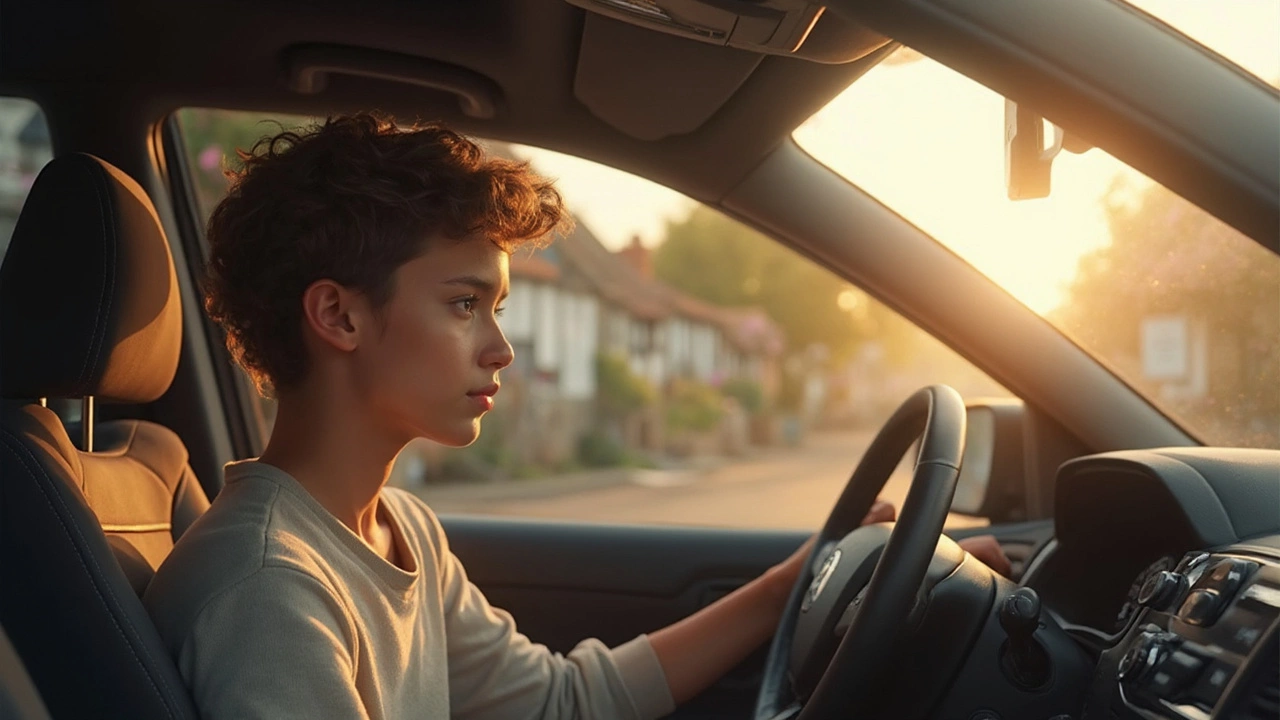Beginner Driving Advice: Easy Steps to Build Confidence
If you’ve just got your provisional licence, the road can feel pretty intimidating. The good news? You don’t need a fancy course to get comfortable. A few simple habits, a bit of practice, and the right mindset are enough to turn nerves into smooth rides.
Get Comfortable with the Basics
Start by mastering the controls while the car is parked. Adjust your seat, mirrors, and steering wheel so you can reach everything without stretching. Practice the clutch‑and‑gas feel (or the accelerator and brake if you’re in an automatic) until the motions feel natural. When you move off the line, keep the clutch point low and give a gentle gas push – no need to slam the pedal.
Next, focus on steering. Keep both hands at the 9‑and‑3 o’clock positions; this gives you the best leverage and reduces fatigue. Do a few circles in an empty car park, then try a slalom with traffic cones or small objects. The goal is to keep the wheel steady and predict how the car reacts when you turn.
Finally, work on braking. Press the brake slowly at first, then increase pressure as you get the feel of the car’s stop distance. Practise stopping from different speeds in a safe area – it helps you judge when to start braking before a stop sign or traffic light.
Build Good Habits Early
One of the biggest mistakes new drivers make is skipping a quick “pre‑drive check”. Before you start, glance at your seat belts, mirrors, and dashboard warnings. A quick check saves a lot of panic later.
Keep your eyes moving. Instead of staring straight ahead, scan the road – check mirrors, watch the road ahead, and glance at the side. This 360‑degree view gives you early warning of hazards and makes lane changes smoother.
Use clear signals. Turn on your indicator at least three seconds before a turn, and always check blind spots by looking over your shoulder. It may feel like extra work, but it builds trust with other road users and cuts down on close calls.
Plan your routes. A simple map or a GPS preview before you leave reduces the chance of getting lost or making sudden lane changes. Knowing the next turn, traffic lights, and any tricky junctions lets you stay focused on driving, not navigation.
Don’t ignore feedback. If an instructor or experienced driver points out a habit – like gripping the wheel too tightly or braking too hard – take it seriously. Small adjustments now prevent bigger problems later.
Finally, stay relaxed. Take deep breaths before you set off, especially after a stressful day. If you feel anxiety creeping in, pull over safely, roll down the windows, and give yourself a minute to reset. A calm mind makes a safer driver.
Remember, confidence isn’t built overnight. Spend a few hours each week on low‑traffic roads, then gradually add more complex situations – roundabouts, busy streets, night driving. Each new experience adds a layer of skill, and before you know it, you’ll be handling the road like a pro.
So grab the wheel, follow these easy steps, and watch your confidence grow. The more you practice, the more natural driving becomes, and the less you’ll think about every little move. Happy motoring!
- February 6 2025
- 0 Comments
- Rowan Cavendish
How to Nail Your First Driving Lesson
Surviving your first driving lesson isn't as scary as it seems. With a clear head, proper preparation, and a few handy tips, you'll be steering through your first experience with ease. Stay calm, apply what you learn, and remember, everyone starts somewhere. Explore practical advice to make your first lesson a success, and set the foundation for becoming a confident driver.
- Driving Lessons (41)
- HGV Training (31)
- Driving Test Tips (31)
- Driving Test Booking (26)
- Driving Licence Renewal (23)
- Driving Theory Test (21)
- Pass Plus Course (15)
- Driving Tips (15)
- Intensive Driving Course (15)
- Driver Licensing (14)
Categories
- December 2025 (12)
- November 2025 (13)
- October 2025 (21)
- September 2025 (5)
- August 2025 (8)
- July 2025 (30)
- June 2025 (30)
- May 2025 (30)
- April 2025 (31)
- March 2025 (30)
- February 2025 (28)
- January 2025 (34)
Archives
- driving lessons
- driving test
- driving tips
- intensive driving course
- driving test tips
- HGV training
- learn to drive
- driving theory test
- driver training
- driving test booking
- pass driving test
- HGV driving
- road safety
- driving license renewal
- Virginia driving test
- learner drivers
- safe driving
- Virginia driver's license
- driving license
- learning to drive

